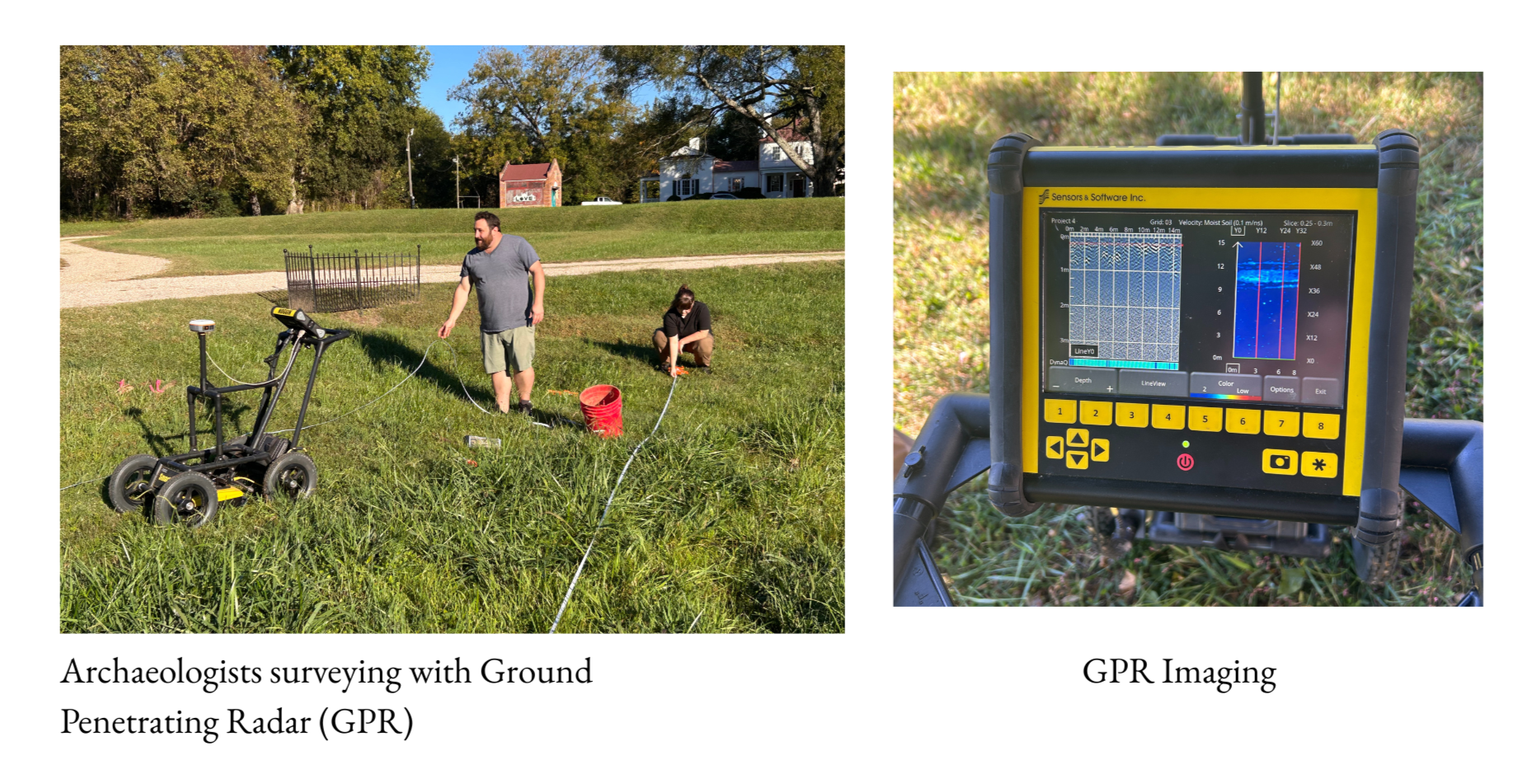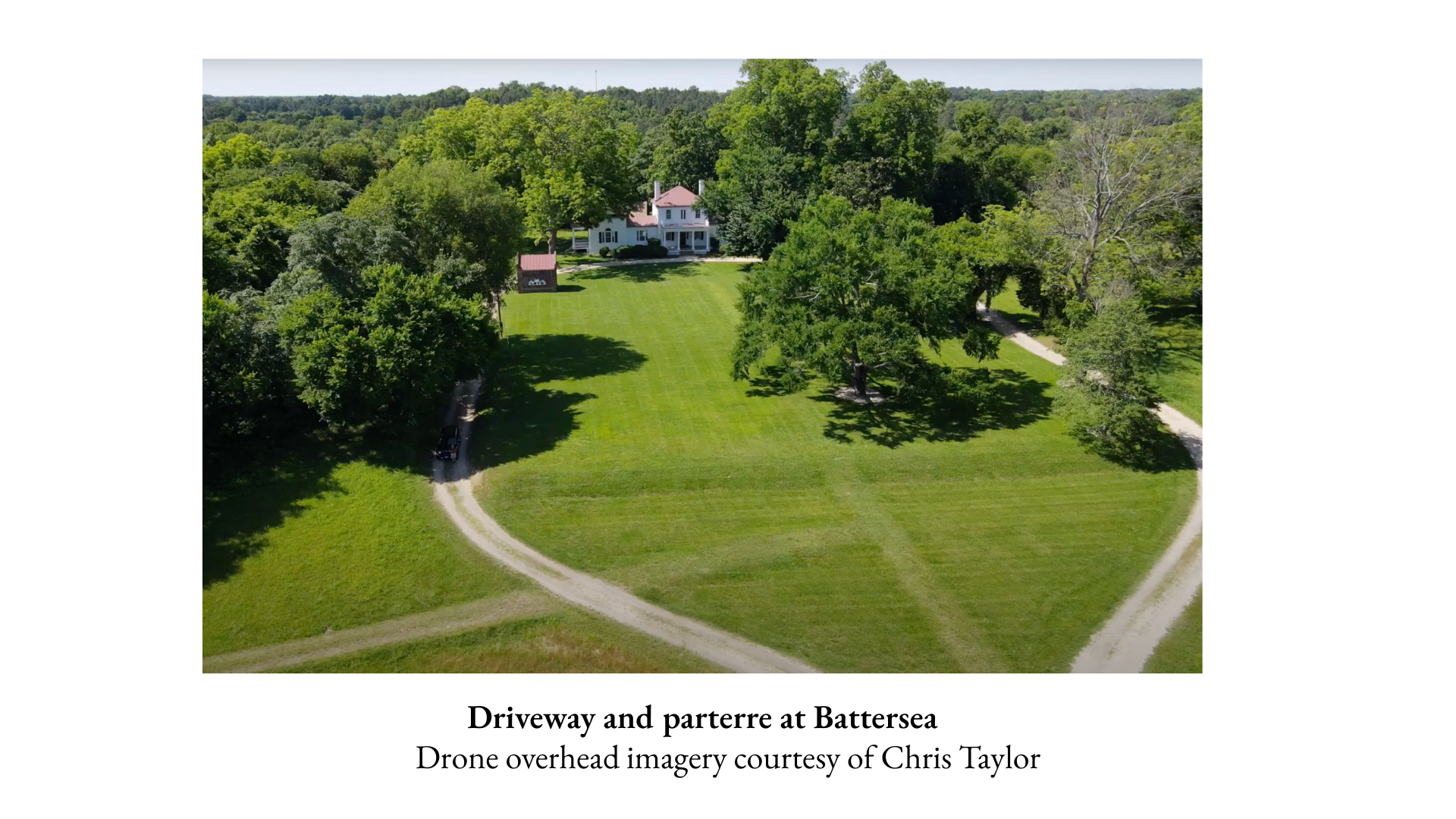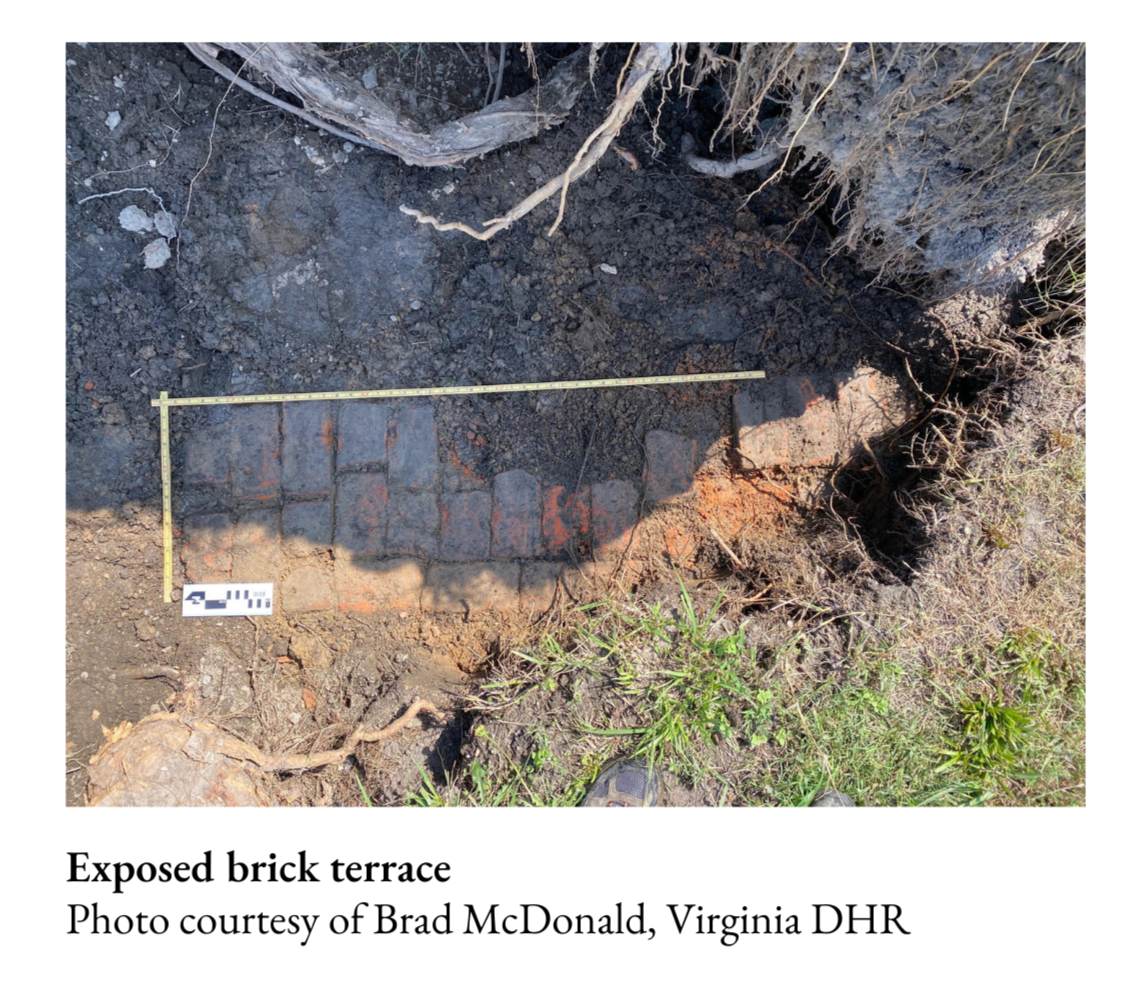Does Battersea Have Two Distinct Landscapes? An Investigation into the Hidden Brick of Battersea
Introduction to Battersea’s Landscapes
With its grand Palladian design, rolling front lawn, and 37 acres perched above the lower Appomattox River, Battersea cuts an impressive figure. Still, much about the property’s original landscape and history remains a mystery.
Battersea’s first owner, Colonel John Banister was the grandson of Rev. John Banister (1650-1692), who became well known as North America’s first “resident naturalist.” But research speculates whether Col. Banister took after the same interest in the natural history of Virginia at Battersea that his grandfather did.
The Battersea we know today was transformed largely by its second owner, Judge John May, who bought the declining estate in the 1830s and renovated the house into a neo-classical villa, with the white stucco exterior and the addition of Roman Doric temples to the east and west pavilions. Judge May also built a driveway and a parterre, a French term for a raised ground platform for gardening. Current LIDAR imaging shows four rows of planting over the parterre— indicating an area of interest for botanical archaeology.
A Recent Discovery
In 2023, an Osage Orange Tree on Battersea’s property fell and revealed a brick terrace, buried more than a foot below the soil level. Archaeologists and the Battersea Foundation suspect that this may be a remainder of Col. Banister’s original landscape. In August 2025, Virginia DHR Archaeologist, Brad McDonald Ph.D., recommended that William & Mary’s Center for Archaeological Research examine the site and vicinity of the exposed brick. This October, archaeologists, Dr. Elizabeth Monroe, Dr. Jon Tucker, and Jordan Wolfe brought Ground Penetrating Radar (GPR) to Battersea to survey the area and investigate the extent of this discovery at Battersea.
What is GPR?
Rather than excavating the ground, GPR is a geophysical, electromagnetic method of subsurface imaging. It works by sending a wave into the ground and reflecting back anything that may lie beneath the ground by creating a visual profile. Typical archaeological surveying can be invasive to historic landscapes, but GPR is an effective way to leave the land less disturbed.
What’s Next?
We hope to have preliminary findings by the end of 2025 or early 2026, which will teach us more about the unknown parts of what makes Battersea such a unique treasure. In the coming weeks, part of the landscape will be uncovered and metal probes will be available for visitors to try their hand at poking the soil in an attempt to hit part of the brick pathway. We can’t wait to share this piece of history by engaging with the public, and all of the exciting updates to come. This project will be a significant new chapter in fulfilling our educational mission and strengthening our understanding of the natural landscape at Battersea.
Want to contribute to this project and more like it?



